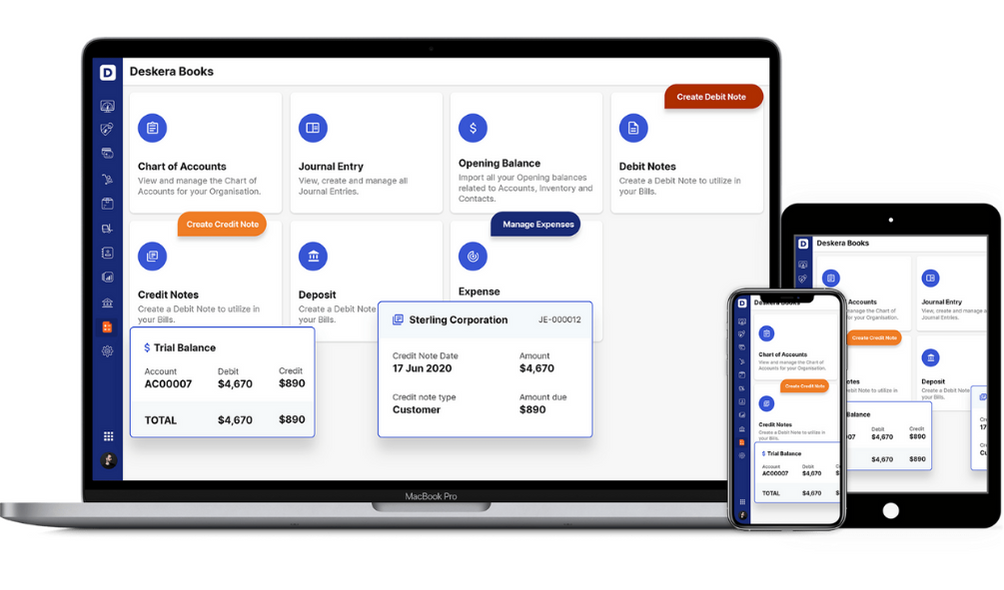The ability to control expenses is essential for corporate success, and controlling overhead costs is essential for achieving favorable profit margins. Overhead costs are the expenses that keep a firm operational yet, do not contribute to the financial growth of the business. Therefore, these costs are also referred to as a burden on the business or indirect costs. In other words, these expenses are necessary for profit-making activities such as product generation or offering a service. However, they do not directly result in profit. Therefore, it is crucial for business owners to closely control these costs each month.
Overhead Rate is the allocation of the cost required for a product generation process. We shall be diving into the depths of the concept of overhead rate.
Here is what we shall be going through:
- What is the Overhead Rate?
- Why is it Important to know your Overhead Costs?
- 3 Types of Overhead Costs
- Overhead rate formula
- How to calculate the overhead rate?
- Shortcomings of Overhead Rate
- 4 Ways On How to Reduce Overhead Costs in Business
- Overhead rate vs. direct costs
- Examples of an Overhead Cost?
- Overhead rate FAQs
- How can Deskera Help You?
- Key Takeaways
What is the Overhead Rate?
The expense of creating a thing or service that is necessary but not directly related to the production process is referred to as overhead. The overhead rate is an expense related to creating a good or service.
Overhead expenses include things like the price of the corporate headquarters that are not directly related to productivity. In order to distribute or allocate the overhead costs depending on certain metrics, an overhead rate is applied to the direct production-related costs.
For instance, even if maintenance is not a part of the production process, you still need to maintain the machinery at a factory. If you want to make well-informed decisions about production planning and product pricing, overhead expenses must be precisely assigned to each production unit, based on a constant rate.
Why is it Important to Track Your Overhead Costs?
Almost all businesses have some kind of overhead consisting of particular classes of indirect costs. The stronger an organization's ability to handle overhead costs, the more viable it is in the marketplace. Due to the fact that the overhead expenses impact the revenue, it is crucial to monitor and manage them. Companies need to be mindful when they encounter overhead or burden expenses. It could lead to unfavorable outcomes and affect the financial activities of a business, depleting profit if left unchecked.
A company's pricing decisions are aided by knowing these costs. One might combine overhead charges and direct expenditures to determine the total costs a company incurs. Additionally, these expenses are critical to calculating the net profit. Subtracting all the expenses, which includes overhead expenses, from the gross profit gives you the net profit value.
3 Types of Overhead Costs
We have walked through the concept of overhead costs and learned that overhead and operating expenses are the two types of expenses that businesses experience. Now, we know that the overhead costs do not help the business generate revenue. At the same time, the operating expenses or operating costs are the expenses that help the business to sustain and function smoothly.
Let's move on to catching the various types of overhead costs in this section. Primarily, there are three categories in which the overhead costs can be divided. Let’s take a look.
Fixed Overhead Costs
The majority of your overhead expenses will be classified as fixed costs. Costs known as fixed overhead are expenses that remain constant regardless of changes in manufacturing activity volume. Fixed expenses are required to keep a business running properly and are rather predictable. Profit margins, however, should account for fixed overhead costs.
Examples of fixed overhead costs include the following:
- Interest rates or EMIs
- Property taxes
- Payroll expenses
- Business insurance
- Software subscription charges
For instance, if an apparel store pays a monthly rent of $2,000, they will need to pay $2000 despite making any monthly profit. It is a set expense, as the name suggests, and does not fluctuate.
Variable Overhead Costs
Overhead charges known as variable costs change based on your monthly operations. All businesses tend to have some of their expenses that are not fixed. Moreover, some of them are not incurred on a monthly bases. It's also important to note that not all business activities may result in variable overheads.
It can be challenging to forecast variable costs. Furthermore, some of these costs may very well be beyond your control. Installing sanitizing stations and providing PPE kits fit very well under the category of variable overhead costs.
Although unexpected, companies can control these kinds of expenses to some extent by being more vigilant. You can be more cautious of your spending on goods or services the firm doesn't require during that slower period if you know that your organization is about to enter a quiet season.
These costs generally include the following:
- Advertising and marketing cost
- Commissions
- Legal expenses
- Shipping costs
- Consultation fees
- Office Supplies
- Administrative expenses.
- Overtime wages
Semi-Variable Overhead Costs
Some expenses are repeated every month, yet, their costs may vary every time. Utilities and other costs are regarded as semi-variable expenses. This is because although they repeat each month, the real cost will change from one month to the next. The electricity bill for your workplace is a classic example in this category.
Examples of semi-variable overhead expenses, in general, include:
- Traveling costs
- Utilities
- Hours worked
- Cost of company vehicles
Overhead Rate Formula
While there are many methods to calculate the overhead rate, the formula that finds a fundamental association is given as follows:
Here,
- Indirect cost = the overhead cost that is not directly related to the product generation
- Allocation measure = measurement essential to the making of a product or service. It could designate anything from machine hours or direct labor hours.
The overhead rate is a time-boxed metric. Therefore, you would add up your weekly indirect or overhead costs if you wanted to calculate the indirect costs for a week. The company can consider this week’s time duration for the measurement.
Therefore, the total weekly cost of your direct labor for production that week would be the denominator if you calculated the overall direct labor cost for the week. To determine how much overhead expenses the company has for each dollar spent on direct labor for the week, you would divide the indirect costs by the allocation measure.
How to calculate the overhead rate
One of the most important KPIs in your company is our overhead rate. It assesses or computes the percentage of sales that must go toward covering your overhead. Additionally, it establishes the expenses that are not directly related to the creation of items or the provision of your services, assisting you in getting more competitive pricing for your goods or services.
You must categorize each overhead expense of your company for a particular time period, often by breaking them down by month, in order to calculate your overhead costs. Even though all indirect costs are overheads, it is recommended to be cautious when classifying these expenses. After separating the costs into groups, sum up all the overhead expenses for the accounting period.
The overhead percentage can now be calculated as a proportion of sales. An overhead percentage reveals the company’s expenditure on overhead and the amount spent on manufacturing a product.
Let’s understand this in a step-wise manner.
Make a list of all your expenses:
You must first identify each of your overhead costs before you can calculate them. Be mindful of all overhead costs, whether they are fixed, variable, or semi-variable, are indirect costs. Examine if an item directly impacts the manufacturing of goods or services. This will help you know which of your costs should be classified as overhead. To establish which of your costs should be categorized as overhead, consider if an item has a direct impact on the production of goods or services.
Any furniture you purchase for your office is not helping you generate revenue, and therefore, it becomes your overhead cost. In contrast, if you consider the raw material your company purchases, it becomes your direct cost or direct expense, as they will be further used to compile the final product, which would sell for a profit. So, fundamentally, the raw material is not your overhead cost.
Total Up All the Costs
Add up all of the charges on your list of overhead expenses and related expenses to get your monthly total.
Figure out your overhead rate
You must divide your overall overhead expenses by your total monthly sales, then multiply the result by 100 to determine your overhead costs.
As seen in the formula:
Example: Applying the values of Overhead costs that add up to $8,000 per month and the value of total monthly sales as $35,000 to the formula above, we get the following value:
From this example, we understand that the overhead rate of 22.85% of every dollar you make from sales of your product must go toward covering your company's overhead expenses.
It is advisable to maintain an overhead ratio that is below 35%. A higher overhead rate may be detrimental to enterprises with lower profit margins. This calls for lowering their overhead costs for a sustainable business.
Shortcomings of Overhead Rate
Having been through the fundamentals of the overhead rate, we have learned how estimating it can help businesses. However, we must also know that it could have certain limitations in cases that involve small businesses.
Applying the overhead rate to businesses with low overhead costs or those whose costs are primarily related to output has limitations. Distinguishing or comparing the overhead rate with other businesses in the same sector is vital.
In other words, the overhead rate of a larger company with many different departments, such as a corporate office, a manufacturing division, and a human resources division, will be higher than that of a much smaller business. This is because a smaller company tends to have fewer indirect expenses.
Having been through the fundamentals of the overhead rate, we have learned how estimating it can help businesses. However, we must also know that it could have certain limitations in cases that involve small businesses.
Applying the overhead rate to businesses with low overhead costs or those whose costs are primarily related to output has limitations. Distinguishing or comparing the overhead rate with other businesses in the same sector is vital.
In other words, the overhead rate of a larger company with many different departments, such as a corporate office, a manufacturing division, and a human resources division, will be higher than that of a much smaller business. This is because a smaller company tends to have fewer indirect expenses.
4 Ways On How to Reduce Overhead Costs in Business
So far in the post, we have a clear idea now that reducing your overhead can drastically boost your profits. Having calculated your overhead rate, if you find your business on the dangerous side of the percentage factor, it is time you evaluate methods to reduce your overhead costs.
This section will show you four effective and easy ways in which you can accomplish it:
Get Efficient expense-tracking tools
By using technologies, organizations can gain insights into where they might reduce their overhead expenditures. Today, there are many software choices that may assist any business owner in keeping track of any inefficient expenses or identifying areas where excessive spending is occurring.
Additionally, a trustworthy accounting tool would make it simpler for accountants to identify tax-deductible expenses during tax season. This would eventually result in more savings and higher profits.
Check on expenditure for unnecessary Office Supplies
When considering cost-cutting measures, reviewing your office supplies could be the point where you can begin. It costs money to constantly replenish supplies of paper and ink. Reconsider if you need a paper or can going paperless is a better and more viable option.
Save all crucial business records in electronic format. Invest in software or a tool that helps you do that. Going digital reduces clutter and helps business owners stay more organized. Additionally, the cost of the program will be considerably less than the recurring expense of making unneeded supply purchases.
Budget Traveling
Some businesses have travel as an integral part. In that case, you cannot avoid the travel completely, but you can certainly save some dollars by cutting down the budget you are traveling with.
Utilizing the airline miles or the points you receive could be a good starting point. Then, you can always reconsider your decision to stay in business hotels and apply some corporate discounts you may come across. Furthermore, if possible, you can work out a virtual meeting instead of traveling to the destination, thereby helping you save a considerable amount.
Get machinery or equipment on lease
Consider leasing goods instead of buying them if you're spending excessive money each year on office supplies. Leasing makes it simpler to switch to the newest models of computers and other equipment. Additionally, expenses like equipment maintenance and upkeep will be reduced while leasing.
Overhead rate Vs. Direct costs
Direct costs are strongly attributable expenses and are specifically related to a good or service a business provides. The cost objects for direct costs are simple to identify. Products, services, departments, and projects can all be considered cost objects. Direct costs include production-related pay, direct labor, direct materials, and industrial consumables.
By distributing or assigning the overhead costs based on the cash value for direct expenses, total labor hours, or even machine hours, the overhead rate transfers indirect costs to the direct costs associated with production.
Examples of an Overhead Rate?
To determine the long-term prices for products and services, businesses must include both overhead costs and direct expenses. By doing this, the company is able to turn a profit.
Typically, direct costs are those that are expressed in dollars and include direct labor expenses, direct machine costs, or direct material costs. These are all also referred to as allocation measures. From the formula, overhead expenses or the indirect expenses divided by direct costs give us the overhead rate.
Overhead expenses do not include the expenses needed to produce goods and services, such as direct labor and materials. Rent, payroll, and insurance are examples of setting monthly and annual overhead costs. Variable overhead costs include advertising costs, which can change monthly depending on the business volume.
Some businesses further divide these expenses into administrative, selling, and manufacturing overhead costs for convenience. Manufacturing overhead is made up of all expenses a manufacturing facility faces aside from direct expenditures, whereas administrative overhead comprises front office costs and sales expenses.
Overhead rate FAQs
Q: What role does overhead rate play?
A: In order to assess how their administrative costs are evolving and changing and whether their organization is inundated with overhead fees rather than profit-generating operations, businesses must analyze and track their overhead rates. Additionally, it helps them determine profitability for output and how much to charge for their goods.
Q: How may your overhead rate be reduced?
A: There are two main strategies for reducing your company's overhead costs.
- Reducing administrative expenses is one. Managers and business leaders in the organization are advised to be vigilant but at the same time, be mindful that they do not take any steps that worsen the issues at hand.
- Growing is the other key strategy for reducing overhead costs. The business can spread fixed costs over more activity. Therefore, the overhead rate is effectively diffused downward even though costs remain the same.
Q: How frequently should you determine the overhead rate?
A: Business owners and managers should calculate and keep track of their overhead rates on a yearly, semiannual, or even quarterly basis. You might wish to calculate even more frequently if your company is expanding swiftly or if its activities or product lines are frequently changing.
How can Deskera Help You?
Deskera Books can help you automate and mitigate your business risks. Creating invoices becomes easier with Deskera, which automates a lot of other procedures, reducing your team's administrative workload.
Sign up now to avail more advantages from Deskera.

Key Takeaways
- A cost associated with the production of a good or service is called an overhead rate. Overhead expenses include things like the price of the corporate headquarters that aren't directly related to productivity.
- Management can set the price of the product appropriately to ensure that there is enough profit margin to cover its indirect costs by calculating how much it costs in overhead for each hour the machine is manufacturing the company's goods.
- A company's profitability might increase if it succeeds in tracking and reducing its overhead rate.
- If you want to make well-informed decisions about production planning and product pricing, overhead expenses must be precisely assigned to each unit of production, based on a constant rate.
- The stronger an organization's ability to handle overhead costs, the more viable it is in the marketplace. Due to the fact that the overhead expenses impact the revenue, it is crucial to monitor and manage them.
- A company's pricing decisions are aided by knowing these costs. To determine the total costs a company incurs, one might combine overhead charges and direct expenditures.
- Fixed overhead costs, variable overhead costs, and semi-variable overhead costs are the three types of overhead costs.
- Costs known as fixed overhead are expenses that remain constant regardless of changes in manufacturing activity volume. Fixed expenses are required to keep a business running properly and are rather predictable.
- Examples of fixed overhead costs include Interest rates or EMIs, Property taxes, and Payroll expenses.
- Overhead charges known as variable costs change based on your monthly operations. All businesses tend to have some of their expenses that are not fixed and are not incurred on a monthly bases.
- There are some expenses that are repeated every month; yet, their costs may vary every time. Utilities and other costs are regarded as semi-variable expenses.
- Buying expense-tracking tools, cutting down on unnecessary office supplies, budget traveling, and leasing machinery and equipment are some of the ways in which you can lower your overhead costs.
Related Articles













